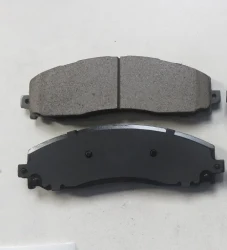Here's an overview of motorcycle brakes
2023-12-11
Motorcycle brakes are a critical component of a motorcycle's safety system, providing the means to slow down and stop the bike effectively. There are two primary types of motorcycle brakes: disc brakes and drum brakes. Most modern motorcycles use disc brakes due to their superior performance, but some smaller or older bikes may still feature drum brakes. Here's an overview of motorcycle brakes:
1. Disc Brakes:
- Components: Disc brakes consist of a rotor (disc) attached to the wheel and a caliper mounted on the fork or swingarm. Inside the caliper are brake pads.
- Operation: When the rider applies the brake lever or pedal, hydraulic pressure is exerted on the brake fluid. This pressure forces the brake pads against the rotating disc, creating friction and slowing down the wheel.
- Advantages: Disc brakes offer better stopping power, heat dissipation, and are generally more effective than drum brakes. They are widely used on both the front and rear wheels of modern motorcycles.
2. Drum Brakes:
- Components: Drum brakes consist of a drum attached to the wheel and brake shoes inside the drum. When the rider applies the brakes, the brake shoes are forced against the drum to create friction.
- Operation: Drum brakes are actuated by mechanical linkages or hydraulic mechanisms. They are less common on modern motorcycles but are still found on some smaller or older models.
- Disadvantages: Drum brakes generally provide less stopping power and are more prone to heat buildup compared to disc brakes. However, they can be simpler and lighter.
3. Anti-lock Braking System (ABS):
- Many modern motorcycles are equipped with an Anti-lock Braking System (ABS). ABS prevents wheel lock-up during hard braking by modulating brake pressure. This enhances rider control and reduces the risk of skidding.
- ABS can be especially beneficial in emergency braking situations and adverse road conditions.
4. Brake Fluid and Hydraulic System:
- Disc brakes, particularly hydraulic disc brakes, use brake fluid to transmit force from the brake lever or pedal to the caliper.
- The hydraulic system is sealed to prevent air and moisture from entering, ensuring consistent brake performance.
- Regular inspection and maintenance of brake fluid levels and condition are essential for optimal brake function.
5. Brake Pads and Shoes:
- Brake pads (for disc brakes) and brake shoes (for drum brakes) are crucial components that provide the friction necessary for braking.
- These components wear over time and need regular inspection and replacement to maintain effective braking performance.
6. Dual Disc Brakes:
- Some motorcycles, especially those with higher performance capabilities, feature dual disc brakes on the front wheel for increased stopping power.
- Dual disc setups provide better heat dissipation and distribute braking forces more evenly.
7. Linked Braking Systems:
- In certain motorcycles, especially touring or sport-touring models, linked braking systems are implemented. When the rider applies the rear brake, the system also applies some braking force to the front wheel and vice versa. This aims to optimize braking distribution and stability.
Proper maintenance, regular inspections, and adherence to manufacturer recommendations are essential for ensuring the effectiveness and safety of a motorcycle's braking system. Riders should be familiar with their motorcycle's specific braking characteristics and practice safe braking techniques for various riding conditions.



